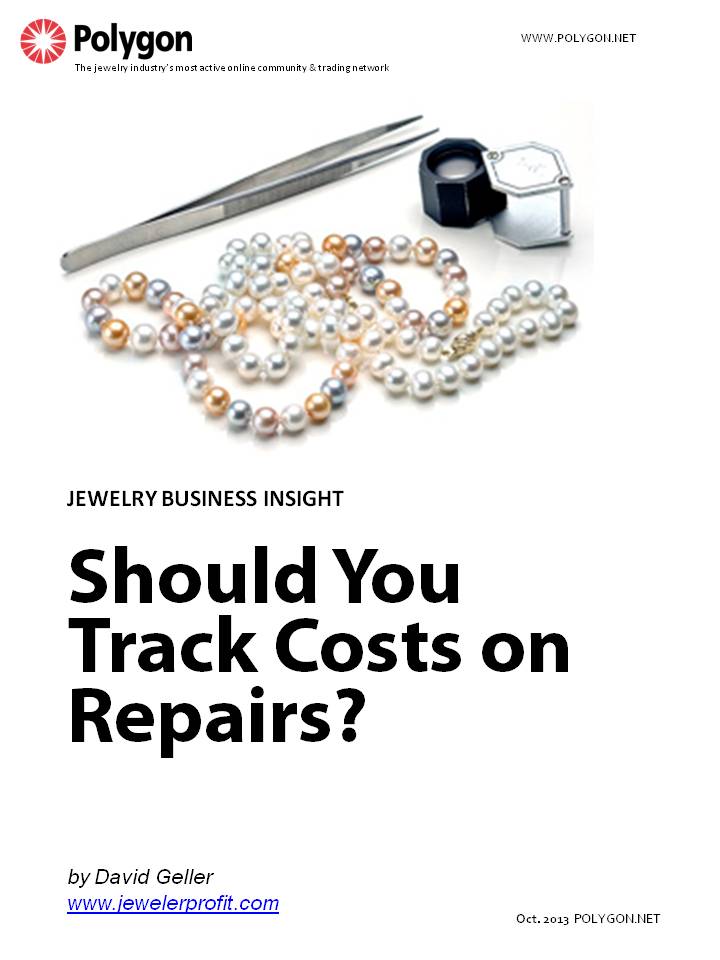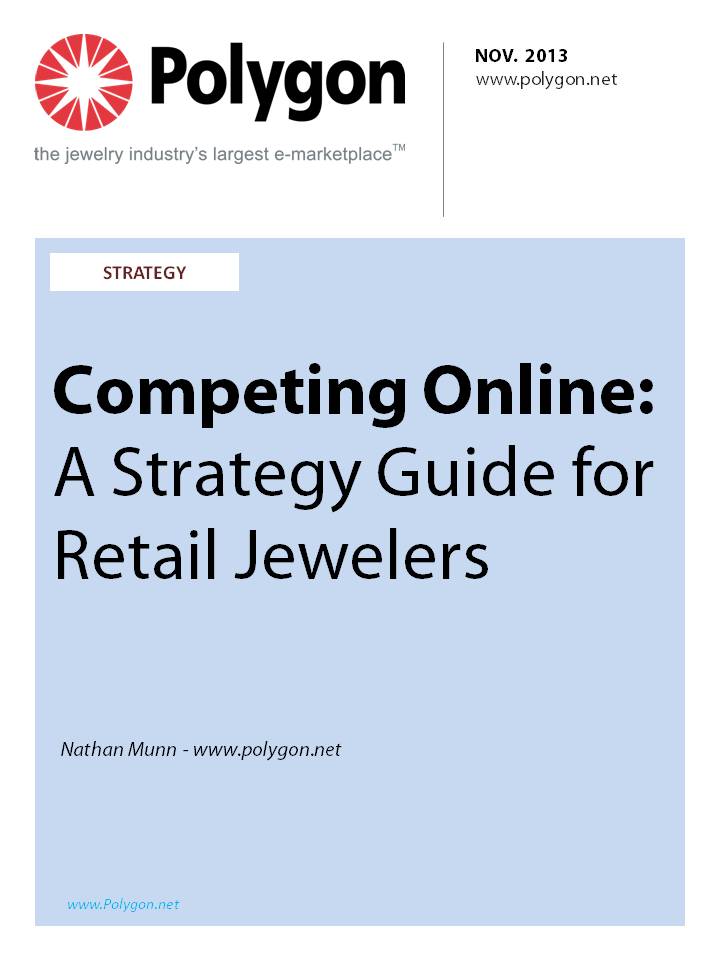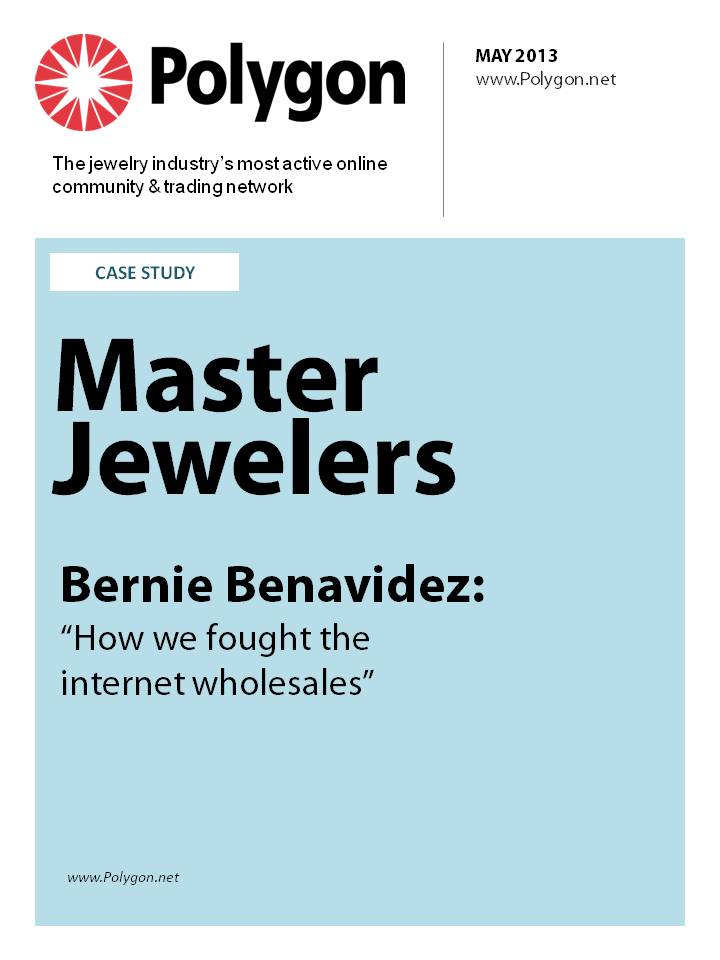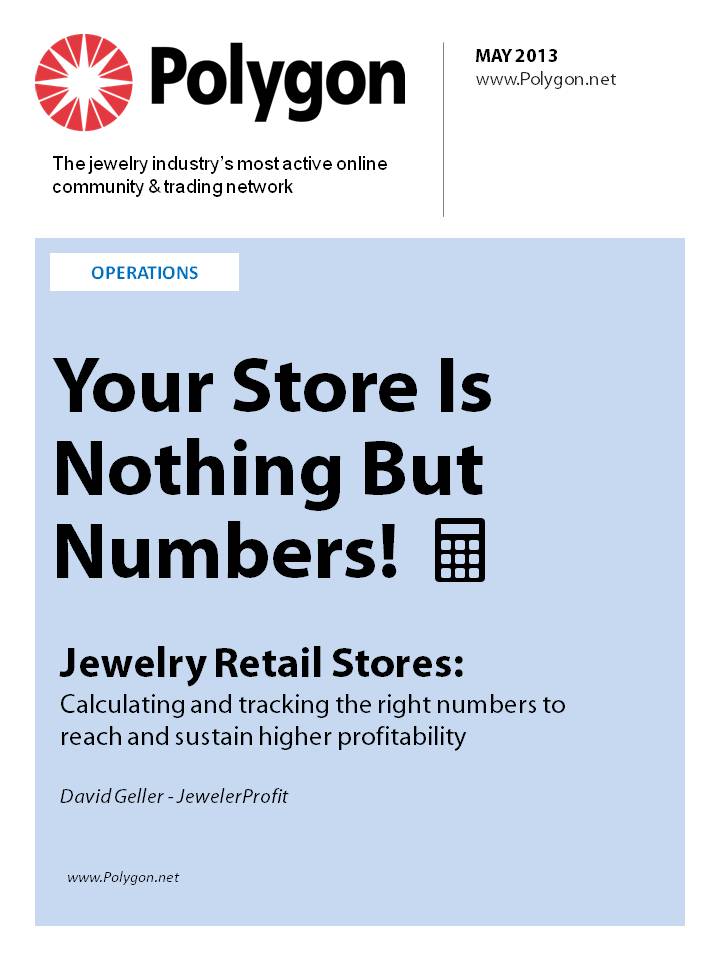Should You Track Costs on Repairs, Custom Work and Other Jobs in Your Jewelry Store?

Over the years, I and others have concocted ways to track costs to see if we are making money on repairs and custom design. For the most part it’s a waste of time. How can that be? We track costs, sales and profits for selling diamonds and rings. Why not repairs and such? The answer is pretty simple – you have no clue what your labor cost is, and neither does the jeweler.
Yeah, but I've been doing this for 20 years and I know how long it takes, you say. Sorry Charlie, no you don't.
There are 3 numbers to costing labor – let’s see if you know what they are:
- The amount of time you think it takes to do the job.
It typically takes 25-50% longer than what you figure. - Down time.
This means time that was not spent doing the actual bench work and can include anything from talking to the staff, answering phones, rolling emery paper, and changing light bulbs. - Freebies.
You may size a ring from the case at no charge, have a redo, or just do something nice for a nice customer.
I've done time studies with bench jewelers, and found that out of a typical 8-hour work day, they average 5.5 hours of bench work. That means that if your jeweler said it took him/her 1 hour to do a job, it really took 1 hour and 20 minutes.
If your jeweler is paid $20/hour, and the job supposedly took 1 hour, you likely calculate your cost at $20.
However, one important consideration that you need to factor in, is that $20 should be marked up just like merchandise. If you'd sell a $20 cost chain for $60, then the jeweler should sell for $60. (Actually, he should sell for $70 because of come-backs, screw-ups, re-dos, freebies, etc.)
Triple key on $20. Pretty good, eh? WRONG!
- It didn't take 1 hour, it took 1 hour and 20 minutes. So your cost has now gone from $20 to $26.
- You also forgot about your matching Fica/Medicare, vacation, sick pay, unemployment. You need to add 25% more to that $26 number to handle those costs. So, your $26 cost is really more like $32.50. All from a guy who makes $20/hour.
So, if you'd triple key $20 to $60 would you also triple key $32.50? If yes, then the jewelers work shouldn't sell for $60 but $97.50! That means your pricing was 38% off the mark. OMG!
Want a simple way to see how your shop is doing without keeping track of all of these numbers?
Track everything by totals by month, not by job. Then compare total shop costs to total shop sales. If shop sales are at least double shop costs (keystone), then you're doing a good job. Go for more? Great! But calculating everything by totals takes into account all of the freebies and re-dos.
On your P&L, spreadsheet or legal pad, the numbers might look like this:
|
SHOP SALES |
|
|
Repairs |
$5600.00 |
|
Custom Design |
$4200.00 |
|
Total Shop Sales |
$9800.00 |
|
SHOP COSTS |
|
|
Jewelers’ pay |
$3200.00 |
|
Jewelers’ taxes |
$800.00 |
|
Findings & supplies bought |
$900.00 |
|
Total Shop Costs: |
$4900.00 |
|
GROSS PROFIT |
$4900.00 50% |
See how much easier it is to see how the shop is doing without counting pennies? This also means you probably shouldn't ask a jeweler how much to charge. Just ask, How long will it take? Say thanks, add 25% to whatever they say and multiply the time by $100-$125/hour for your time.
Most findings will be triple key added to the labor.
If you're not getting at least keystone, it’s time to raise your shop prices. That's the only way to fix your problem unless you can lower the jeweler’s paycheck, and good luck with that!
Now you'll be making money, and not to worry – you’ll keep your closing ratio because repairs are not price sensitive, they are trust sensitive.
David Geller, www.jewelerprofit.com






